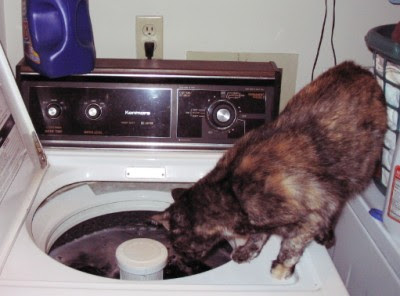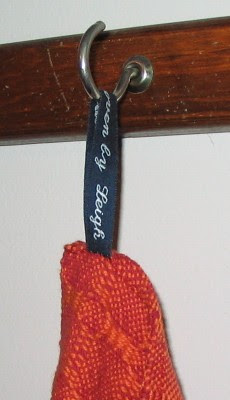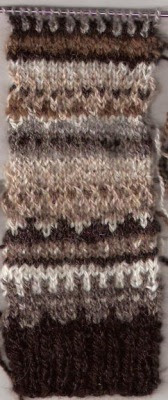By
LeighIn preparation for warping my loom, here's what I've learned about M's & O's so far:
1. It is a block weave.I have to admit that in my early days of weaving, the concept of blocks was not an easy one for me to grasp. It wasn't until I read the first chapter of
Eight Shafts: A Place to Begin by Shelp and Wostenberg, that the concept began to make sense. The authors discussed blocks in terms of pattern development. The "unit" is the base, being the smallest number of warp ends needed to make a weave structure. "Blocks" are one or more repeats of the same unit. Repeated blocks can further be developed into "motifs."
In the case of M's & O's, only two, 8-thread blocks are required. Therefore, can be woven on four shafts.

Block A - threaded from the right -
1 - 2 - 1 - 2 - 3 - 4 - 3 - 4

Block B - threaded from the right -
1 - 3 - 1 - 3 - 2 - 4 - 2 - 4
When woven, these produce alternate areas of plain and weft-rep (ribbed) weave. These ribbed areas are actually 4-end floats.
The blocks can be repeated in an equal number to create checks, or they can be unequal to create plaids.
More blocks can be added for more shafts.
2. It is a linen weave.So called because historically, it was a traditional weave for Scandinavian and Colonial American household linens.
In
The Shuttle-Craft Book of American Handweaving, Mary Meigs Atwater states that it was commonly used for plain toweling; single repeats producing a fine, all-over figure. Larger patterns were used for more elaborate towels, as well as table linens.
3. It is a grouped thread weave.Harriet Tidball, in
The Weaver's Book, puts M's & O's in the "grouped thread class," so called because both warp and weft threads curve together into textured areas. This class also includes huck and spot Bronson, two other linen weaves. All these alternate areas of tabby with texture spots.
4. It is a balanced weave:- Yarns for warp and weft are the same in size.
- It has the same number of weft shots per inch as warp ends.
- The tie-up is balanced. Block A is woven alternating shafts 1-2 and 3-4. Block B alternates shafts 1-3 and 2-4. In other words, it is woven "on opposites".
- The shafts are balanced, i.e. every shed has an equal number of shafts up and down.
5. It is a one shuttle weave.
Which is fine by me! All the faster to weave, especially as I have a
deadline for this project. Traditionally, the weft is one color, the same as the warp. A one color weft is also fine by me, though I may not be wholly traditional with matching it to the warp.
In the meantime, my warp is measured, loaded into the raddle, and ready to be beamed. I'm hoping to make good progress on this project over the weekend.
Related Posts:
M's & O's - Weaving ObservationsHoneycomb M's & O'sMultiple Tabby Weaves




























